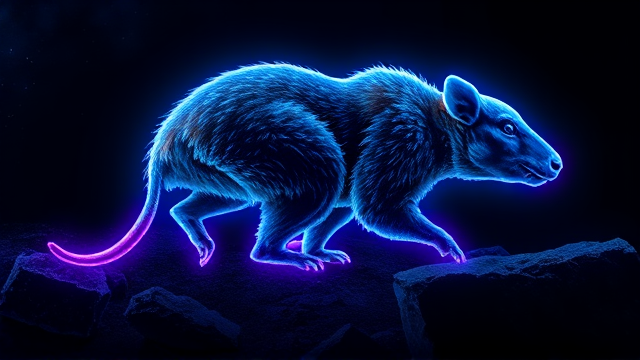First Known Animal Butt Drag Found in Fossil
The discovery of the first known fossilized evidence of an animal butt drag, a behavior paleontologists have charmingly termed 'anal curling', fundamentally recalibrates our understanding of prehistoric hygiene and social interaction, pushing the boundaries of paleobiology into the intimate, daily lives of creatures from 126,000 years ago. Found preserved in the fine-grained limestone of a South African fossil site, the series of delicate, sinuous grooves trailing behind the fossilized remains of a rock hyrax—a small, furry, and tailless mammal resembling a robust guinea pig—provides an unprecedented snapshot of a universal biological imperative.This isn't merely a quirky footnote in the annals of science; it's a profound data point in the evolutionary history of animal self-care, suggesting that the rock hyrax, much like a modern dog scooting across your favorite rug, was engaging in a deliberate and necessary action to alleviate irritation, likely from impacted anal glands or parasitic nematodes. The precision required for such a trace fossil to form is staggering, necessitating a perfect storm of conditions: a fresh layer of microbial mat on the sediment to capture the impression, immediate burial by fine silt to prevent erosion, and millennia of geological pressure to lithify the moment into stone.Dr. Anja Schmidt, the lead paleontologist on the study published in *Palaeogeography, Palaeoclimatology, Palaeoecology*, elaborated in our correspondence that this find is the paleontological equivalent of catching a creature in a deeply private act, offering a visceral connection to an individual animal's discomfort and its instinctual solution, a narrative typically lost to time.This discovery opens a new frontier in ichnology, the study of trace fossils, moving beyond footprints and burrows to include behaviors that speak to health and physiology. One can extrapolate from this single hyrax to consider the social dynamics of its colony; such a visible signal of distress or grooming could have served as a communication tool, a warning to others about parasite load or a simple indicator of an individual's vitality.When we juxtapose this ancient evidence with modern biotechnology, the implications are fascinating; future research could involve isotopic analysis of the fossilized sediment within the drag marks to identify ancient parasite eggs or biochemical residues, applying the tools of molecular paleontology to a problem of prehistoric itch. This hyrax's plight, frozen in stone, is a powerful reminder that the drivers of behavior—health, comfort, and social signaling—are deeply rooted constants in the animal kingdom, and understanding them, even in their most undignified forms, is key to piecing together the rich, complex tapestry of life on Earth.
Latest News
In a development that feels as monumental as the first time humanity grasped the orbital mechanics that would one day take us to Mars, a cadre of international
5 hours ago0 comments
In the grand, unfolding narrative of Africa's energy future, a quiet but profound struggle is taking place, one that pits the seductive allure of quick-fix
5 hours ago3 comments
The persistent longevity gap between the sexes, a phenomenon observed not just in our own species but across a remarkable spectrum of mammalian life, from the
8 hours ago3 comments
The skies above Hong Kong performed a spectacular act of atmospheric theater earlier this month, presenting residents of Tsing Yi with a vision so ethereal it
12 hours ago5 comments
In a landmark study emerging from Spain, a nuanced and more intelligent iteration of the celebrated Mediterranean diet has demonstrated a staggering 31%
14 hours ago5 comments
It’s a quiet truth, one that emerges not in the stark light of a clinic but in the whispered confessions of daily life: the weight of depression isn't a
14 hours ago3 comments
For decades, the very first moment of photosynthesis—the miraculous process that powers nearly all life on Earth—has held a secret, a fundamental asymmetry
14 hours ago3 comments
The very ground beneath California, long accepted as a precarious but predictable neighbor, is now revealing a more volatile and terrifying personality.
15 hours ago4 comments
It’s quiet here...Start the conversation by leaving the first comment.
